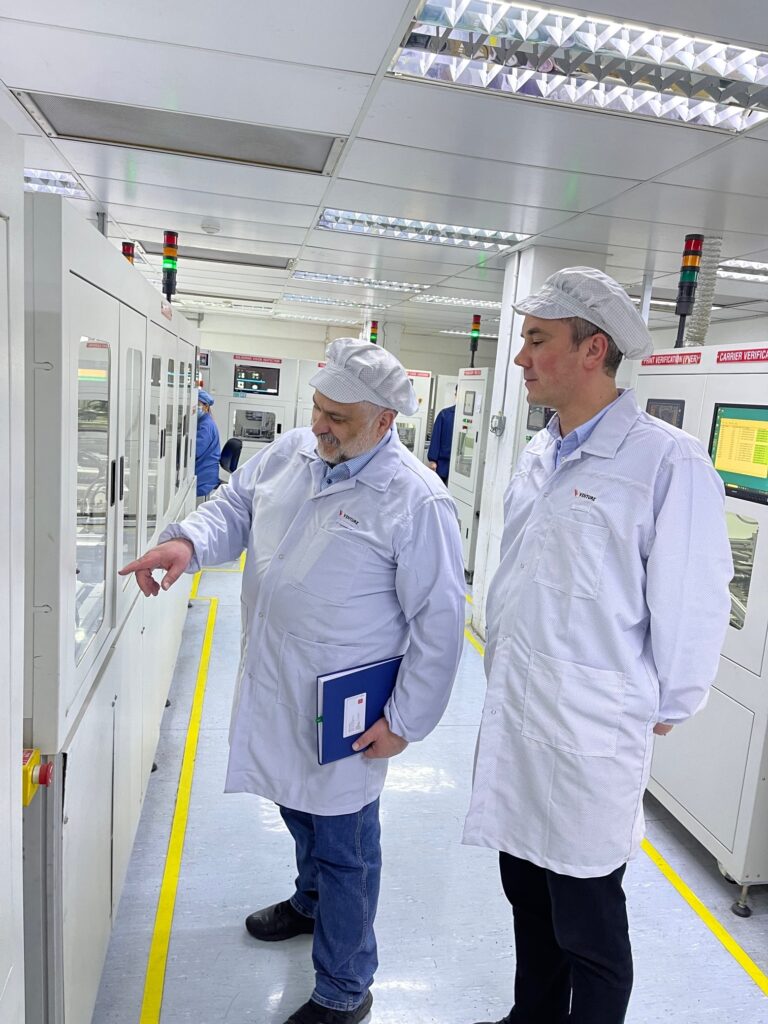

News
Building a resilient future: Pål Almlie on Q-Free’s tolling supply chain strategy
Interview with Pål Almlie, Q-Free’s VP of Supply Chain Management, on Innovation and Sustainability
Q-Free’s Supply Chain Management team plays a critical role in ensuring the company’s competitive edge in a rapidly evolving world. By focusing on technology, efficiency, and sustainability, the team ensures smooth operations while meeting the growing demand for innovative tolling solutions. In this interview, Pål Almlie, Vice President of Supply Chain Management, shares insights into the department’s goals, exciting projects, and the strategic changes reshaping the future of Q-Free’s supply chain.
Pål, to start with the basics, what is the role of Supply Chain at Q-Free?
“The main goal of the supply chain team is simple: to help Q-Free succeed by delivering excellence in supplier operations, production, and logistics,” Pål explains. “This includes achieving quick lead times, flexible delivery capabilities, cost efficiency, and sustainable processes. Together, these goals form a strong foundation for Q-Free’s success.”
What are the most exciting projects the department is working on?
“There’s always a lot happening at Q-Free, and it’s hard to pick just one project,” Pål says. “But right now, I’d say the most exciting is the development of the production setup for our next generation of On-Board Units (OBUs). It’s a highly collaborative project across the Tolling unit, with everyone relying on each other to succeed.”
From the supply chain side, the focus is on automating production further. “We’ll increase our production capacity by about 15%. To put it into perspective, the new production line will create one OBU every 2.5 seconds—a major step forward in efficiency and our ability to meet growing demand.”
How has the supply chain changed over the past five years?
“This is a big question,” Pål admits, “because so much has changed. Before COVID-19, we focused on continuous small improvements to lean processes. But the pandemic, along with geopolitical shifts, inflation, and climate concerns, has reshaped priorities in supply chain management.”
One major shift has been toward resilience and risk management. “The component shortages of 2021-2022, for example, showed how vulnerable supply chains could be. As a result, we’ve moved from focusing only on low-cost operations to a ‘best-cost’ approach, which balances price with factors like risk, lead time, and flexibility.”
Sustainability has also taken center stage. “Five years ago, sustainability was more of an occasional topic. Now, environmental and societal concerns, along with regulations, play a key role in shaping strategic business decisions. They’ve also become a much more critical part of bid processes,” Pål explains.
“If there’s one broader lesson to take from recent years, it’s that the times we live in are increasingly unpredictable. Strong partnerships and flexible thinking are essential not only for navigating what we expect but also for responding effectively to the unexpected.”
How will supply chains evolve over the next 5-10 years?
“At Q-Free, we’ve long focused on Q-Flow, Q-Clean, and Q-Safe—product categories that reflect our vision for more free-flowing, clean, and safe movement of people and goods,” Pål explains.
“Our work in supply chain management toward 2030 aligns with these goals. We’re aiming for continuously more efficient, cleaner, and safer supply chains, driven by innovation, new regulations, and greater adoption of advanced technologies.”
The integration of Environmental, Social, and Governance (ESG) principles will play a key role. “With upcoming regulations, ESG will become more standardized, helping companies understand the wider impact of their operations on people and the planet. It will also allow stakeholders to compare companies more easily and make decisions based on harmonized data.”
Like most companies, Q-Free is on a journey. “Right now, we’re focused on improving our operations. Over the next 5-6 years, I believe sustainability will transform business models, much like digitalization did a few decades ago,” Pål says.
Technology will also drive significant change. “We’ll see more automation and increased use of AI, IoT, blockchain, and machine learning. These tools will help us monitor supply chains more closely, forecast trends better, and make faster, smarter decisions.”
What makes Q-Free’s supply chain unique?
“With 40 years of experience, we’ve designed our supply chain to be as robust as possible in a volatile world,” Pål says. “We’ve made careful choices about where to produce and built strong relationships with core suppliers. Our partners share our ambitions, and together, we’re prepared to address future risks and opportunities.”
Q-Free’s production setup is another point of pride. “We can monitor production performance in real time and work closely with our production partners. This gives us full insight into capacity, yield, and quality, even though we’re not physically present,” Pål explains.
“In addition, we strive to be a trusted partner, delivering high-quality products while maintaining high standards in supply chain management. I am deeply thankful for our dedicated partners and employees, who work tirelessly to ensure we remain a reliable backbone of our tolling organization and deliver value to our customers,” Pål concludes.

